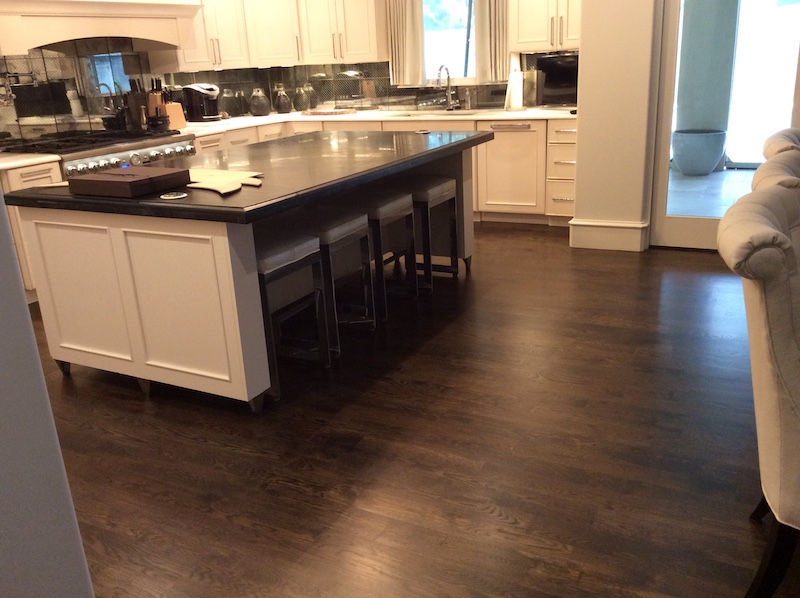Let’s face it: a well-installed hardwood floor can add elegance and beauty to any room in your home, including your kitchen. That being said, there is some debate about whether hardwood flooring is the best choice for kitchens. After all, the kitchen gets higher traffic than probably any other room in the home. And between active children and “sloppy chefs,” kitchen floors tend to see more spills, as well! Is the look of hardwood flooring in your kitchen worth the increased risk of damage to the floor? Or would it be better to consider other types of flooring like tile or stone? Let’s explore the pros and cons of installing wood flooring in the kitchen.
The Pros
Let’s begin with the positive—because there are plenty of good reasons to consider hardwood flooring for the kitchen. Let’s look at these now:
Beautiful appearance
Of course, the biggest selling point for wood floors in the kitchen is their attractiveness. Wood flooring exudes an inviting sense of warmth that tile and stone simply can’t match. That’s a huge selling point when you consider how much time you probably spend in the kitchen with family and friends.
Easy to clean
The idea that tile flooring is easier to keep clean than wood flooring is a myth. In reality, wood floors are no more difficult to clean than tile or stone. In fact, stone flooring may be more prone to staining than wood, so that may give hardwood flooring an advantage. Simply clean the floors regularly just as you should with any other type of flooring, and clean up messes when they occur.
Easy on the feet and back
Standing on hard stone or tile flooring can create strain on your feet and back after a while. Wood flooring is more pliable and has a bit more “give” to it, so it’s easier to stand on while cooking or cleaning.
The Cons
Hardwood flooring also presents a few challenges when installed in the kitchen. Let’s discuss these now:
Prone to scuffs and scratches
Admittedly, kitchen floors see a lot of foot traffic, which can cause scuffing. In addition, kitchen floors may see increased levels of dirt, dust, and crumbs, both from increased traffic and from food preparation. If not cleaned regularly, these particles can be ground into the floor and cause scratches. A good polyurethane finish can provide some protection here, but the best way to prevent these scuffs and scratches is clean the floor regularly. If you still have concerns about scratching, you might want to consider a textured or distressed wood finish, which can mask scratches quite well.
Prone to damage from spills
Liquid spills can do damage to wood floors, and kitchens see more spills than most other rooms in your home. However, the damage doesn’t happen instantly—it happens only if the liquid is left standing. Again, the key to preventing moisture damage to hardwood flooring in the kitchen is simply to clean up spills when they happen.
Our Take on It
So…do pros outweigh the cons when it comes to hardwood floors in the kitchen? Ultimately, that’s up to you to decide. As we said, wood floors aren’t more difficult to clean than stone or tile, but you might just want to clean them a little more often. If you value the attractive look of hardwood flooring over tile, and if you’re willing to put in a little extra care and maintenance, hardwood floors can be an excellent choice for your kitchen. If you have genuine concerns about upkeep, or if you just prefer the look of stone or tile (which can have their own appeal), you might choose one of those options. From our perspective…all things considered, there’s no “deal-breaker” here. There’s no reason for you not to have hardwood flooring in your kitchen if you want it. Just understand what you need to do to care for it, and you can keep it looking good for many years to come.
If you’re considering installing new hardwood flooring in your kitchen or any other part of your home, we’re here to help. If you live in Tulsa, Claremore, Owasso, Jenks, Catoosa, or anywhere else in Green Country, call us 918-298-4477 to schedule a free quote.

